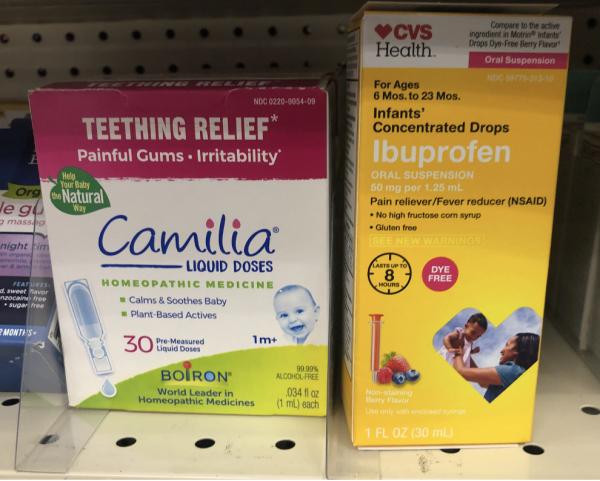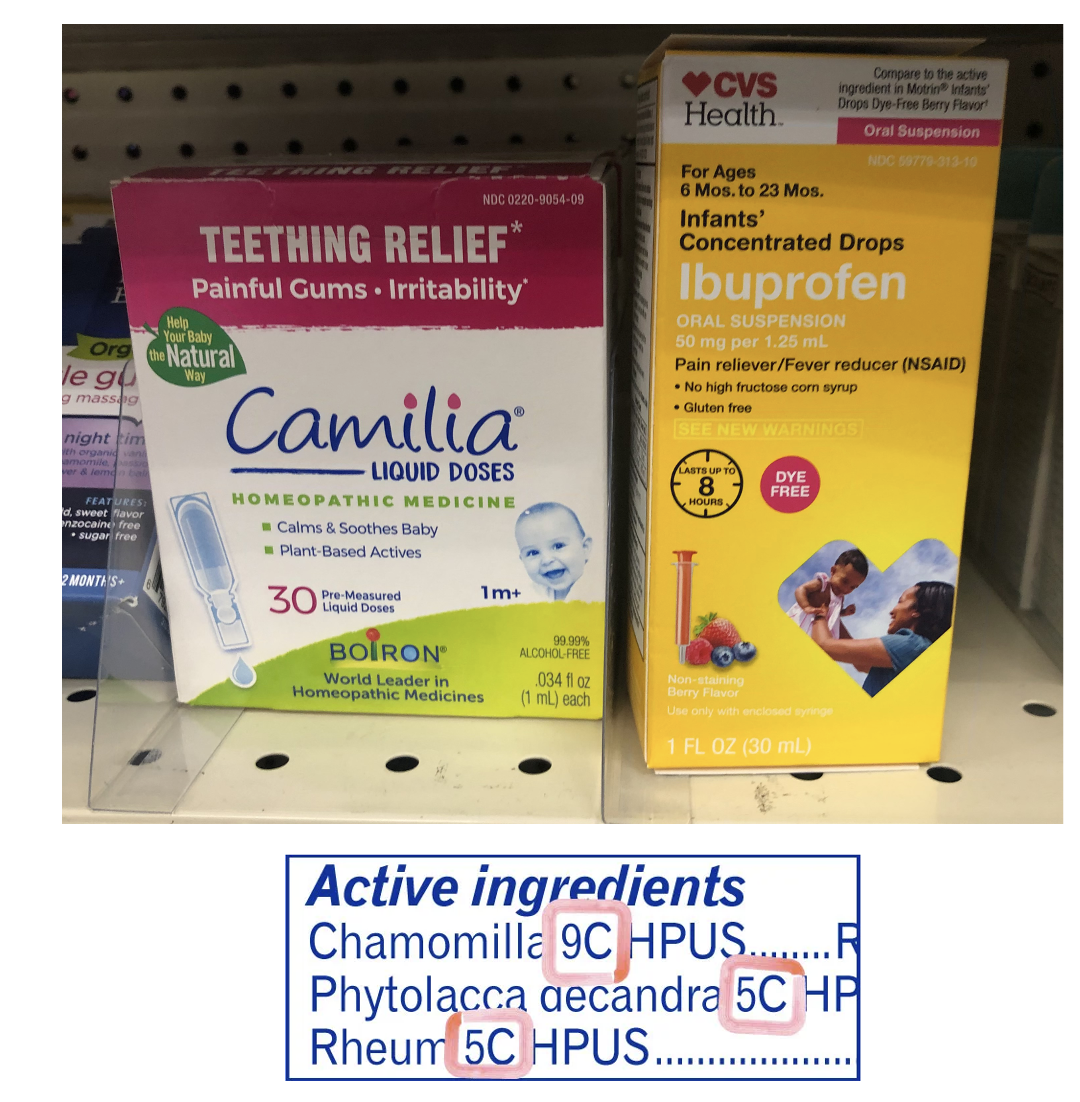
It's bad enough that pharmacies sell "homeopathic remedies" – a contradiction in terms if ever there were one. I suppose it would be marginally more acceptable if they were sold in the candy aisle since if there's anything in these products (aside from water) at all, it's sugar. Short of that, putting the worthless product in its own aisle, which could be called "homeopathic products," "placebos," or "for suckers only" would still raise questions about why useless and potentially harmful (1) bottles of crap are sold in a pharmacy.
These questions have indeed been raised by the Center for Inquiry, a non-profit group that is like-minded with ACSH on most medical and scientific issues (2). CFI has been after pharmacies before, specifically CVS and Walmart, in a lawsuit that began in 2022. So far it's gone rather well: [my emphasis]
“The Appeals Court got it right—CVS and Walmart have to justify how they present these worthless junk products to consumers. It’s time for these mega-retailers to take a good look at their position, and to stop the pretense that homeopathy is real medicine and deserves to sit alongside science-based products that actually work on retail shelves.”
Center for Inquiry vice president and legal director Nicholas Little, Press release, 1/27/2023
One of my (many) pet peeves is not that pharmacies sell this junk, but also that they place it next to real products on their shelves as if to suggest that one is an alternative to the other. In fact, here's a photo I took a couple of months ago while waiting in an endless line to pick up a script at none other than CVS! And in another coincidence, CFI is also pursuing another lawsuit against Boiron, the world's largest maker of homeopathic products.
Boiron's Camilla vs. ibuprofen

At CVS, Boiron's Homeopathic Camilia Drops were sitting next to children's ibuprofen as if to suggest that they're more or less equal. The problem is that there is virtually nothing in the Camilia Drops except water and a maybe very small amount of alcohol. The partial list of "active" ingredients comes directly, red squares and all, from Boiron's website. The numbers in the boxes are the reason I'm writing this. The diagram below explains what 9C and 5C mean.

Homeopathic serial dilution. Modified from original source: Skeptical Raptor
The original substance (some plant, herb, duck liver – it doesn't matter) is dissolved in alcohol and diluted 100-fold (1C) to give a solution that now contains 0.01 mg of whatever is in the "Mother Tincture" (3). After 5 dilutions (5C), each decreasing the concentration of whatever crap is in there by 100-fold, the solution now contains 0.00000001 mg – essentially none. To put this in perspective, a grain of salt (4) weighs about 0.06 mg, meaning that the mass in the 5C solution is 1/600,000th that of a grain of salt. I tried to do the same calculation for 9C but my calculator ran out of zeros, so this may or may not be correct: the 9C solution contains 1/60,000,000,000,000 (one sixty billionth the weight of the salt grain). If this isn't close enough to zero consider that at 13C – 4 more dilutions – there is none of the original substance left. Zero. (5)
Camilia provides targeted relief of painful gums and irritability with traditional homeopathic medicines rather than general pain relievers or numbing agents. It also helps with minor digestive disorders sometimes associated with baby teething.*
*Claims based on traditional homeopathic practice, not accepted medical evidence. Not FDA evaluated.
Camilia Teething website
And here's the hilarious part. The ingredients on the Camilia label range from 5C to 9C. According to homeopathic principles, which are just about as genuine as professional wrestling, the more dilute the solution the stronger it gets. It's a damn good thing that they didn't dilute the s### even more or it could be way too strong! (Ask a believer of homeopathy how a solution with nothing in it is going to treat anything and be prepared for a trip into The Twilight Zone.) And it gets even better. Even though super-strong 13C solutions, where there is none of the original ingredient present, Boiron sells an even more powerful product!

Yes, Boiron has taken a 13C product where only water remains and diluted it another 17C, making it 1,000,000,000,000,000,000,000,000,000,000,000-times more dilute than a solution that had nothing in it in the first place. (That number is 10-34. I don't know what you'd call it.)
It's not just Boiron.
Last year I had some issues with a new company called Genexa, which was launched by two fathers who were concerned about the quality of OTC medicines for their kids. Genexa features products for children with the motto "medicine made clean." This, of course, implies that other brands of (acetaminophen/Tylenol) are somehow "dirty." Left unsaid is that acetaminophen is made from petroleum feedstock, so even though the Genexa brand may be made without certain possibly objectionable additives (6) (artificial colors, for example) the purity of its acetaminophen depends upon the purity of the same factory-made acetaminophen that goes into any other brand.

OK, let's assume that the guys that started Genexa mean well and are simply sharp businessmen tapping into the freakish "I'll out-organic you" trend by providing medicines that may have a gimmick, for example, being clean.
Technically, this is correct. It certainly is clean. So is every other "sugar pill."

Genexa's "Cold Crush" will crush your wallet ($16.99/bottle) but not your kid's cold. It contains no medicine. Zero.
NOTES:
(1) Homeopathic products can be harmful in two ways: 1) They can contain real amounts of a toxic substance, for example, belladonna; 2) If they are used in place of a real medicine for a sick person the absence of any active drug can make the person sicker.
(2) CRI also delves into religion (is there a god?) – topics we won't touch.
(3) A tincture is an alcohol solution of (usually) a drug. "Mother Tincture" is the original solution. Or maybe a nun
(4) There is also a British unit of weight called a grain. It equals about 60 mg.
(5) At about 12C there is one molecule of material remaining. If you divide this solution into two flasks one will (by definition) have one molecule remaining and the other none.
(6) Justin Biel, the Contributing Editor Oracle NetSuite, who interviewed the Genexa founders made a pretty bad error in the first paragraph: "...the pair came face-to-face with medicines packed with unhealthy or unnecessary inactive ingredients — like artificial food dyes or propylene glycol, the poisonous ingredients in antifreeze." Sorry, Justin but this is dead wrong. It is ethylene glycol, the ingredient in old antifreeze, that is toxic. Propylene glycol, which has largely replaced ethylene glycol is sold in Kosher bottles by chemical suppliers. Why? It is a very safe food additive that is metabolized to give pyruvic acid, a critical component of the Krebs (aka citric acid) cycle. We would not be alive without it,



